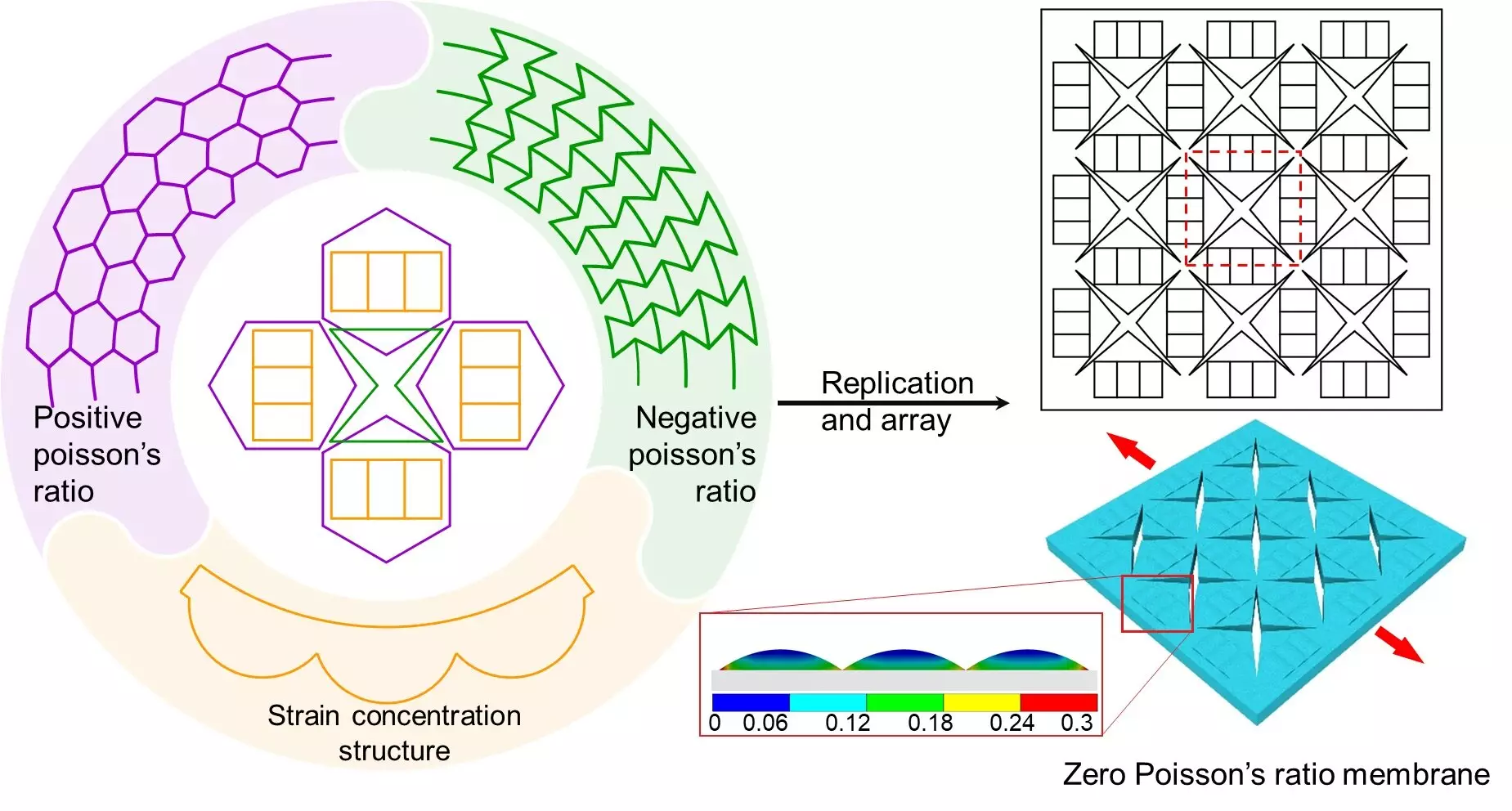Flexible sensors have seen significant advancements in the past decade, allowing for a wide range of sensing capabilities. However, the measurement of complex deformation, especially from multi-axial forces or strains, remains a challenge due to the inability to independently perceive multi-axial stimuli. The Poisson’s effect of sensing materials presents a major obstacle in the independent perception of biaxial stimuli.
Zero Poisson’s ratio (ZPR) materials have caught the attention of researchers as they maintain a constant transverse width under longitudinal strain, making them promising candidates to address interference issues in biaxial or multi-axial stimuli perception. Despite the potential benefits, preparing zero Poisson’s ratio elastomer membranes is a daunting task due to the incompressible property and the nearly 0.5 Poisson’s ratio of elastomers.
Research Led by Prof. Wu and Dr. Huang
Professor Hao Wu and his student Dr. Xin Huang from the Flexible Electronics Research Center at Huazhong University of Science and Technology have taken on the challenge of developing zero Poisson’s ratio structures. They proposed combining traditional positive Poisson’s ratio (PPR) structures with negative Poisson’s ratio (NPR) structures as a potential solution to achieve zero Poisson’s ratio.
Hybrid Structure Analysis
The research team discovered that the Poisson’s ratio of the hybrid structure was a result of the superposition of the Poisson’s ratio of the individual structures. By manipulating the feature size and width of the hybrid structure, they were able to vary the Poisson’s ratio between positive and negative values. Finite element analysis helped determine the optimal parameters for obtaining the ZPR membrane.
Results and Implications
The PDMS membrane with the hybrid structure exhibited a significantly lower Poisson’s ratio of 0.07 compared to 0.43 in the PDMS membrane without the hybrid structure. This reduction in Poisson’s ratio highlighted the effectiveness of the hybrid structure. The ZPR flexible sensors developed using these membranes could accurately detect uniaxial stimuli and independently detect biaxial stimuli.
The ZPR flexible sensors have immense potential in various applications, including robotic manipulation and healthcare. They can accurately measure contact forces between rigid manipulators and objects, as well as detect locomotion distance and direction in soft robots. Additionally, these sensors can be used for human-machine interfaces and robotic tactile sensing.
The development of zero Poisson’s ratio flexible sensors opens up new possibilities in the field of sensing technology. The innovative approach taken by Prof. Wu and Dr. Huang demonstrates the potential for improved sensing capabilities in various applications, paving the way for advancements in healthcare, robotics, and human-machine interactions.


Leave a Reply